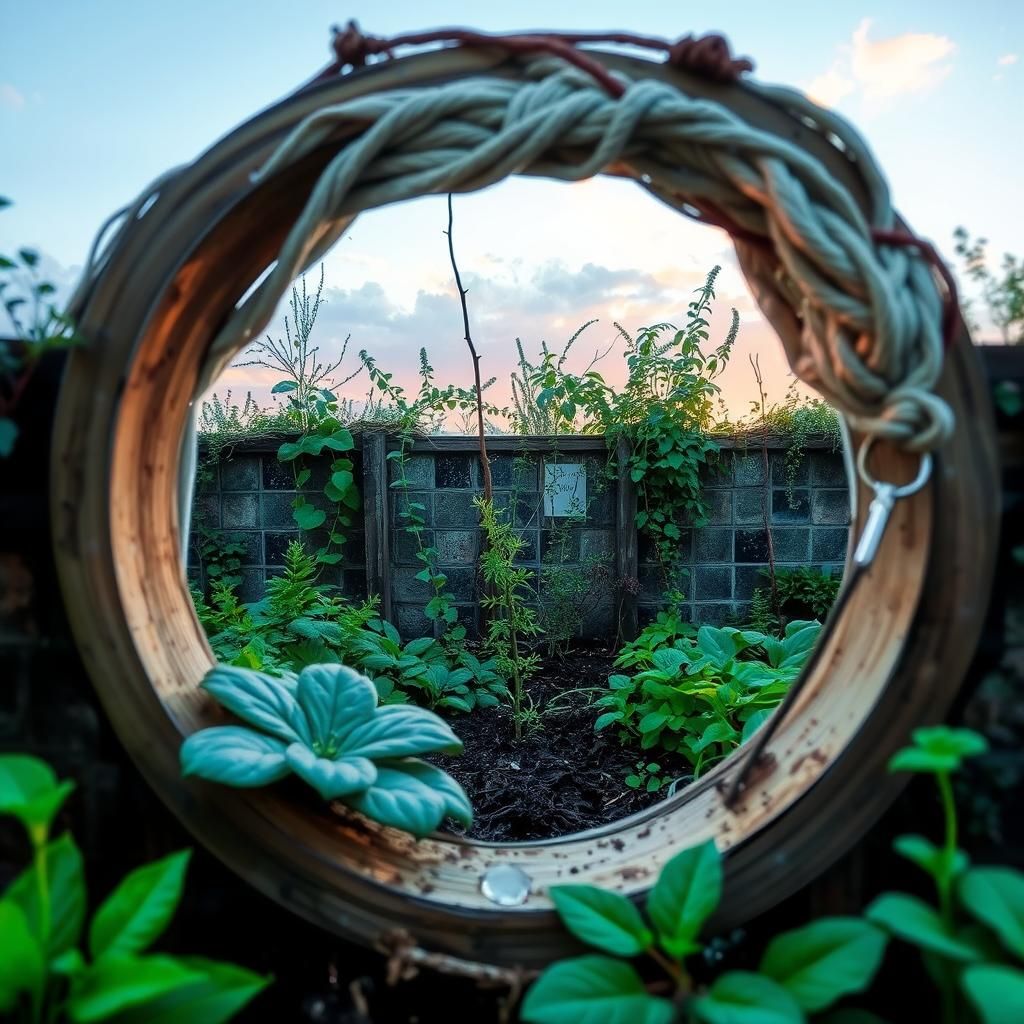Do Keyhole Gardens Really Work? Uncovering the Truth Behind This Unique Gardening Method

Keyhole gardens have emerged as a popular gardening method, particularly in areas with limited space and resources. This innovative approach combines traditional gardening techniques with sustainable practices, creating a convenient and efficient way to grow food. But do keyhole gardens really work? In this article, we will explore the principles behind this unique gardening method, examine its benefits and challenges, and uncover the truth about its effectiveness. Whether you are a novice gardener or a seasoned horticulturist, understanding keyhole gardens can help you determine if this method is the right fit for your gardening needs.
Do Keyhole Gardens Really Work?
Keyhole gardens are designed to maximize space and resources, making them particularly effective for urban gardening and locations with limited access to water. The unique structure of a keyhole garden allows for better air circulation and water retention, which can significantly improve plant growth. A central compost pile provides nutrients as it decomposes, enriching the soil over time. Many users report healthy yields and a reduction in pest problems, proving that when constructed and maintained correctly, keyhole gardens can be a highly efficient and sustainable gardening solution.
What is a Keyhole Garden?
A keyhole garden is a circular raised bed with a central composting area that resembles a keyhole shape. This design creates an accessible gardening space where gardeners can reach the center without stepping into the soil, minimizing soil compaction. Typically elevated above ground level, keyhole gardens are built using permaculture principles, promoting sustainability and nitrogen recycling from the compost materials placed in the center.
Benefits of Keyhole Gardens
Keyhole gardens offer numerous benefits, including efficient water usage due to their design, which allows for deep watering while minimizing evaporation. The composting center not only provides a constant source of nutrients for plants but also helps to maintain moisture in the surrounding soil. Additionally, these gardens can contribute to biodiversity, supporting various plant species and beneficial insects, which can improve overall garden health and productivity.
Challenges in Maintaining Keyhole Gardens
While keyhole gardens can be highly effective, they do come with certain challenges. Regular maintenance is necessary to ensure the compost pile remains active, requiring frequent additions of organic material and managing the balance of green and brown materials. Additionally, gardeners must remain vigilant against pests and diseases, as their concentrated structure can facilitate the spread of issues if not properly managed. The initial construction may also require more effort and resources compared to traditional gardening methods.
See also:
Tips for Successful Keyhole Gardening
To ensure the success of a keyhole garden, it's important to start with a well-planned design that incorporates adequate drainage and sunlight exposure. Regularly monitoring the health of the compost center and adding various organic materials can enhance nutrient availability. Utilizing perennial plants along with seasonal crops can create a more resilient garden ecosystem. Moreover, implementing companion planting techniques can help dissuade pests and promote beneficial relationships among plants.
Examples of Plants to Grow in Keyhole Gardens
Keyhole gardens are versatile and can accommodate a wide variety of plants. Ideal options include leafy greens like spinach and kale, which thrive in nutrient-rich environments. Coupled with root vegetables such as carrots and radishes, these plants benefit from the moisture-retaining abilities of the raised beds. Additionally, herbs like basil and cilantro can flourish in smaller spaces, providing culinary benefits. Incorporating flowering plants can attract beneficial insects, promoting overall garden health.
| Feature | Benefits |
|---|---|
| Water Efficiency | Reduces water waste and evaporation |
| Nutrient Availability | Continuous supply from compost center |
| Accessibility | Easier to reach plants without compaction |
| Biodiversity | Supports multiple plant species and beneficial insects |
| Pest Management | Minimizes pest problems through diverse planting |
Understanding the Benefits and Challenges of Keyhole Gardens
Keyhole gardens are gaining popularity as a sustainable gardening method, particularly in regions where water conservation is crucial. These gardens are designed to minimize resource use while maximizing food production through a circular structure that includes a composting basket in the center, allowing nutrients to leach into the soil as water is added. The design not only makes it easier for gardeners to access the plants without stepping on the soil but can also enhance soil fertility over time. However, while keyhole gardens offer numerous advantages, they also present certain challenges, such as requiring careful management of compost and moisture levels to ensure optimal growth of crops.
What are the Key Features of Keyhole Gardens?
Keyhole gardens are characterized by their circular design, which typically consists of a central compost basket surrounded by a raised bed. This unique structure allows gardeners to effectively utilize space while remaining environmentally friendly. Users are able to access all parts of the garden from the keyhole-shaped entry point without compacting the surrounding soil, which is essential for maintaining healthy root systems and moisture retention.
How Do Keyhole Gardens Contribute to Sustainability?
One of the most significant benefits of keyhole gardens is their role in promoting sustainability. By incorporating composting material directly into the garden, these systems reduce waste while providing a nutrient-rich environment for plants. Additionally, their water-efficient design allows for effective moisture retention, minimizing the need for frequent watering. This minimizes the overall environmental impact of gardening and contributes to more sustainable food production.
See also:
What Crops are Best Suited for Keyhole Gardens?
Keyhole gardens can accommodate a variety of crops, making them versatile for different gardening preferences. Vegetables such as lettuce, spinach, carrots, and radishes thrive in these gardens due to their quick growth cycles and ability to adapt to the nutrient-rich environment. Additionally, herbs like basil, parsley, and chives can flourish in the well-maintained soil. The design supports intercropping, allowing gardeners to maximize their yield by planting companion plants together.
What Are Common Challenges When Using Keyhole Gardens?
While keyhole gardens offer numerous benefits, they are not without their challenges. Maintaining moisture levels can be tricky, especially in hot climates where evaporation rates are high. Additionally, the composting center requires regular upkeep to ensure that it remains effective in providing nutrients. There is also a learning curve involved in understanding the right balance of greens and browns in compost, which can deter some novice gardeners from reaping the full benefits of this method.
How Do Keyhole Gardens Compare to Traditional Gardening Methods?
When compared to traditional gardening methods, keyhole gardens present several advantages and disadvantages. The circular design allows for more efficient space usage and requires less physical effort in reaching all crops, which can be particularly beneficial for those with mobility issues. However, traditional gardens often require less ongoing management concerning composting and moisture levels, making them a more straightforward option for some gardeners. Ultimately, the choice between the two methods depends on the gardener's preferences, available resources, and specific gardening goals.
Questions from Our Readers
Do keyhole gardens really work?
Yes, keyhole gardens do work effectively in maximizing space and providing a sustainable method for gardening. They utilize a circular design with a composting center that nourishes plants, making them ideal for small areas and urban settings, while also promoting efficient water usage.
What are the benefits of keyhole gardens?
The benefits of keyhole gardens include improved soil fertility, reduced water usage, and easy access for gardening. Their unique structure allows for better drainage and prevents soil erosion, while the composting center continuously enriches the soil, leading to healthier plants.
See also:
Are keyhole gardens suitable for all climates?
Keyhole gardens are quite versatile and can be adapted to various climates. However, the success of these gardens in different environments depends on factors like temperature, precipitation, and the types of plants chosen, so it's essential to adjust the garden design accordingly.
How often should I maintain a keyhole garden?
Maintenance of a keyhole garden typically requires minimal effort, involving regular watering, occasional compost replenishment, and periodic weeding. A general guideline is to check the garden weekly to ensure optimal plant health and make necessary adjustments as growth progresses.

If you want to read more articles like Do Keyhole Gardens Really Work? Uncovering the Truth Behind This Unique Gardening Method, we recommend you check out our Landscaping category.
Leave a Reply
Related Articles